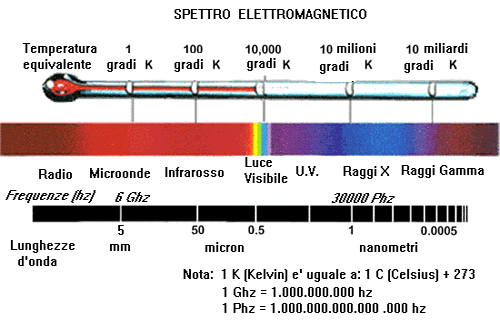Quando avviene l'aberrazione cromatica? Per quale motivo a volte la riscontriamo sulle fotografie?
- ITA -
Le aberrazioni cromatiche sono un difetto che spesso è possibile riscontrare nella maggior parte delle lenti in commercio.
Sebbene questo difetto sia altamente minimizzato dalle nuove tecnologie e dai filtri presenti in commercio, ogni qualvolta la luce passa attraverso un mezzo cambia il suo indice di rifrazione e dunque la sua velocità di propagazione.
E' proprio in questo caso che si hanno aloni ai bordi dell'immagine di varie colorazioni.
Essenzialmente, ciò che si osserva sono variazioni verso il blu oppure verso il rosso, questo è dovuto al fatto che lo spettro elettromagnetico ha come suoi estremi proprio questi due colori.
A lunghezze d'onda che variano fra 450 a 475 nm abbiamo una colorazione blu (per lunghezze inferiori possiamo trovare il violetto) metre per variazioni tra 620-750 nm abbiamo il colore rosso.

(Fonte immagine INFN)
Questo tipo di problema, dunque, è presente in maniera maggiore o minore i tutti i sistemi ottici composti da lenti.
Per risolvere questo problema, spesso, ci si affida alla progettazione e alla costruzione di lenti acromatiche in cui l'aggiunta di correzioni permette di annullare e disperdere il difetto modificando l'angolo di rifrazione per la medesima lunghezza d'onda.
L'aberrazione cromatica può essere di tipo laterale con colorazioni che vanno dal rosso al verde e dal blu al giallo, di tipo assiale con colorazioni che vanno dal viola al verde.
E' possibile annullare il problema via software naturalmente, Aperture 3 o Adobe Lightroom hanno, ad esempio, funzioni che permettono questa operazione.
Certamente, l'origine della fotografia è ciò che conta ma la tecnologia in questo senso ha fatto salti da gigante come già riscontrato in fotocamere come la Fujifilm x-pro1 davvero formidabili da questo punto di vista, a mio avviso!

- ENG -
Chromatic aberrations are a defect that it is often possible to find in most of the lenses on the market. Although this defect is highly minimized by new technologies and the filters present in the market, each time the light passes through a medium changes its refractive index and therefore its speed of propagation.
E 'in this case you have halos at the edges of the image in different colors.
Essentially, what is observed are changes toward the blue or towards the red, this is due to the fact that the electromagnetic spectrum has as its extremes just these two colors.
At wavelengths ranging from 450 to 475 nm have a blue color (for shorter lengths can find violet) meter for variations between 620-750 nm have the color red.
This type of problem, therefore, is present in greater or lesser extent all the optical systems composed of lenses.
To solve this problem, often, we rely on the design and construction of achromatic lenses in which the addition of corrections allows you to cancel and dispose of the defect by changing the angle of refraction for the same wavelength.
Chromatic aberration can be either side with colors ranging from red to green and from blue to yellow, axial type with colors ranging from purple to green.
And 'possible to cancel the course in software, Aperture or Adobe Lightroom 3 have, for example, functions that allow this.
Of course, the origin of the photo is what matters but the technology in this way has made leaps and bounds as experienced in cameras like the Fujifilm x-pro1 really terrific from this point of view, in my opinion!






